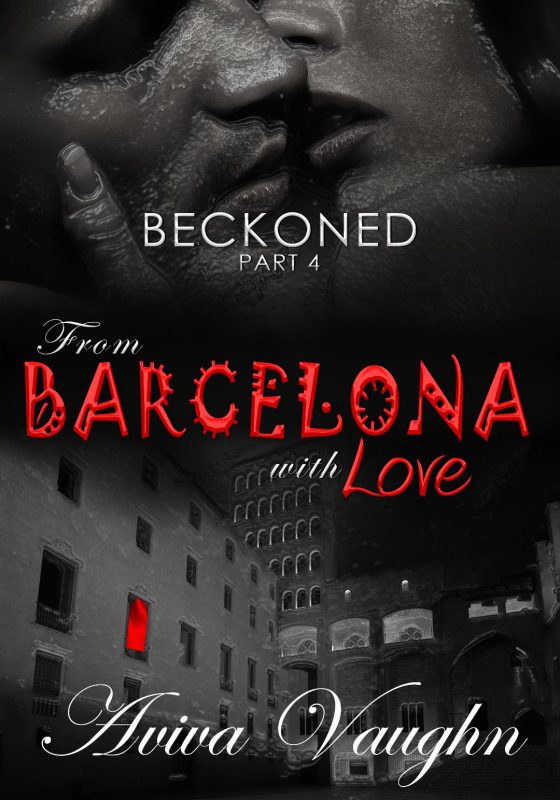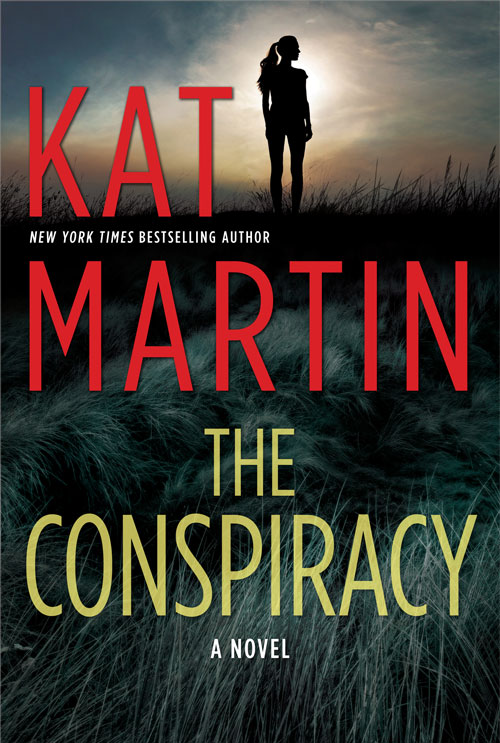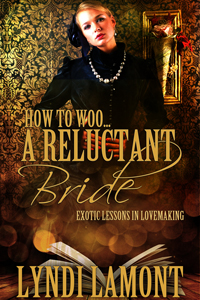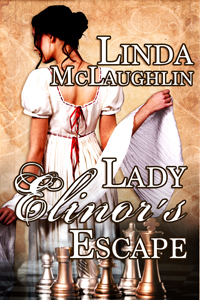Change of Plans
March 5, 2021 by Tracy Reed in category Pink Pad by Tracy Reed tagged as Marketing for Authors, publishing, read tracy reed, writing
Happy March.
I have a confession. I am a writer who hasn’t released a new book in over a year. There, I said it. I can’t believe my last new release was late 2019.
I will not lament about the ups and downs of 2020, nor will I use the pandemic as an excuse for not publishing a book. Instead of publishing a new book, I concentrated on completing a book, which I did. Truthfully, my plan was to release The Good Girl Part Trois last year, but that didn’t happen.
Instead, I reread it and realized it needed a little work. A little work quickly turned into a lot of work. I’m not complaining because I’m very pleased with the story. However, I’m a lot disappointed I let so much time lapse between releases. The extra time gave me some perspective and an opportunity to figure out a launch plan.
I listened to several podcasts and You Tube videos searching for a new release launch plan. In the end, I decided to try something completely different slow and escalating. I would love to land in a bestseller spot at the end of release day or week. To accomplish such a feat would take a lot more planning than I have. My plan takes patience. I look at it as setting my book up for long term sales.
First step in my plan, push the release date back. This was a difficult decision to make. After all, in Jann’s post as well as mine, I said my release date was February 23rd. Why the change? A couple of things…lack of time and a couple of amazing promotion opportunities. As it got closer to the middle of February, I felt rushed. Although I was going with a slow crawl release plan, I still felt rushed. The other reason was promotion slots.
I forgot it was difficult to book premium newsletter slots without reviews. Since I hadn’t finished tweaking the edits, I didn’t have time to secure additional beta readers. I was in trouble. Thank God, I had the opportunity to participate in a couple of free giveaways.
I was already considering making book one free as a lead in for the series. When these opportunities came up, jumped on them and made the first two books free. This got me to thinking, instead of trying to buy a lot of newsletter ads for the new release, I’m buying ads for the first two books. I’ll stagger them for maximum the exposure. Bottom line, I’m going to promote these free books like crazy for a month. Hopefully, this will lead to a lot of pre-orders for book three. I’ll let you know how it turns out.
Second, reformat books one and two. I knew I had to upload the new covers which would only literally take a few minutes with Vellum. All I needed was the original file. Sounds easy, except for one minor detail, I couldn’t find the file. It wasn’t until I had spent a couple of hours searching my computer, that I remembered I didn’t format them.
Once I found the original files, I loaded them and in a matter of minutes the books were formatted. However, before calling it a day, I reread the books and made a few tweaks. That’s a joke. I re-wrote a few chapters. In the end, I added a few hundred words and modified some of the character behavior to match up with books three and four. This little task took about a week to complete. I didn’t stop there. I also decided to update the style of the book which led to another week of work.
I thought I was done with the first two books, until I realized I needed to update the print versions as well. If this was a new release, this step could have waited, but these were books that were already out. I took them down on Amazon, but I think they might still be up. This may sound bad, but I hope no one buys a print version until I get the new version uploaded.
Amazing how something which seemed simple turned into a major project. I wasn’t looking forward to reformatting the print books. Again, I was feeling pressured. I use Vellum and this turned out to the the perfect time to try their print version. In a matter of seconds, I had a print version of my book. It was nice, but I tweaked it with some special chapter headers. I like the file, now all I need to do is order the proof. I’m going to try to release the print version for book three on release day, but it might have to wait a couple of weeks. I need a break.
What does the rest of my release plan look like? A lot of ads. I already have a Facebook ad running, but I’m going to increase the spend and add another one. Funny thing, I mentioned two of the promotion events I’m doing are for free books. I set the books as free on all the platforms except Amazon. I was waiting a few days. However, someone must have requested a price match for The Good Girl Part One, because Amazon set it as free. As of this posting, it was #11 in Black & African American Romance and #14 Two-Hour Romance Short Reads. Seems like my plan is working.
Now all I need to do is finish the edits, format and continue with my launch plan. I’ll let you know how it turns out.
Thieves Book Tour, Giveaway and Excerpt
March 4, 2021 by marianne h donley in category Apples & Oranges by Marianne H. Donley, Rabt Book Tours tagged as @gfjolle, Greg Jolley, Suspense, ThievesThieves
Suspense
Date Published: March 1, 2021
Publisher: Épouvantail Books
From Tropea, Italy to Michigan and Florida, the thieves Molly and April Danser are on the run, trying to escape from an enraged ex-US Marshal. He is hell bent on stopping them once and for all, his twisted black heart fired up for revenge and their total destruction. Will the sisters elude his blood-soaked hunt? They have their smarts and resource but have never faced a pursuit like this.
Can they somehow put an end to his blood lust?
What will they have to do to save themselves from his powerful and deadly claws?
The hunt is on…
About the Author
Greg Jolley earned a Master of Arts in Writing from the University of San Francisco and lives in the very small town of Ormond Beach, Florida. When not writing, he researches historical crime, primarily those of the 1800s. Or goes surfing.
Contact Links
Twitter: @gfjolle
Preorder Today
Excerpt
Thieves
Greg Jolley
Chapter Twenty-Nine
A Day to Do
April woke at first light, seeing she had slept on top of the bed instead of climbing in under the blankets. After putting the coffee percolator on the burner, she went and checked the boat’s position at the lower helm. Starting the engines, she steered southeast in the northward Gulf Stream and watched the blue swells until the boat was pretty much in the same location as the day before.
“At least eat,” she instructed herself, it being twenty-four hours or more since her last meal. Opening a can of stew, she ate it cold with a spoon while sipping coffee. Looking at the closed laptop at her elbow, she hesitated to reach for it.
“Only one way to deal with fear.” She opened the lid and started the computer.
Her fingers unsteady above the keys, the vision from the previous day’s nightmare came fully into view. The big dark doorway at Klave’s. Her imagination ran with and gave her the rolling door crashing down and up fast like steel teeth chomping, chewing.
“Back off.” Her shoulders shuddered, and she barked at the vignette.
Opening a secure internet browser, she launched the messaging application.
After addressing an email to Allison, she froze for a minute, her fingertips quivering. The three hardest words she ever typed displayed.
April: Did she die?
Hitting send, she stared at those three words, waiting for the reply that she couldn’t will Allison to answer.
***
Sometime later, she opened a browser alongside the messaging application where her question to Allison still floated without an answer. The local television stations had previously recorded ‘on scene’ footage ripe with frightful images of Klave’s with the breathless voices of newscasters. There were no details of any worth.
Opening the online Daytona Beach News-Journal, the story was in the banner.
Three Killed in a Possible Attempted Robbery
April read that David Klave was declared dead on the scene. She learned that Molly’s pal, Dennis, was also murdered, evidence suggesting that he was trying to cover and protect another victim. No other names were offered, pending notification of next to kin. One man had been shot twice and was expected to survive. He was being attended to in the ICU at Memorial Medical Hospital. There was nothing about the third victim. No mention of Molly or her status.
She saw her own name given as one of the ‘persons of interest.’
Klave’s employees were quoted as saying that the suspect had a long face that was injured. He had driven off in a late model red Corvette, heading north.
She read three more news reports in the Ormond Beach, Orlando, and St. Augustine newspapers, the body count making the story a headliner. There was no additional information, only a recap and worthless commentary.
She closed the browser and looked to the messaging application.
No reply from Allison.
She sent the text again and waited ten long and painful minutes.
Leaving the table for the flying bridge, she grabbed a bottle of water and a package of the saltines she had seen her sister snacking on. The light went out over the middle of the galley as she left, and she made a mental note to put in a fresh bulb.
Up top, the breeze was sweeping away the heat of the day. She checked her location, fired the engines, and spent the next hour staring at the ocean until she had the boat back in place.
Climbing down the ladder, she went inside and saw that Allison had not replied.
“My beautiful Molly…” she held her eyes closed, “… I’m still hoping.”
She spent the rest of that day at the lower helm, getting up every half hour to look for a message from Allison.
As the sun set at her back, she went inside to look again. The darkening galley reminded her to find a package of light bulbs and a step-ladder. She found both in the click-lock supply closet and had the dead bulb out and was poised to twist in the new one when it slipped from her fingers. It shattered, and she got a new one from the closet, along with the dustpan and broom. The second bulb went in easily, and she climbed down to sweep up the aluminum cone and shards.
The messaging application pinged.
Instead of hurrying to it, she stalled, fearful of the news. She finished up the sweeping and stepped to the table, the ball of her right foot landing on a stabbing missed piece of glass.
“Brilliant.” She felt the deep cut as she swung around on the bench and looked to the message screen.
April: Did she die?
Ali: Don’t know.
April: Find out.
Ali: I’m on it. It is a fuck storm here. Wasn’t here when it happened. Parts store.
April: You learn anything?
Ali: Yes, of course.
Greg Jolley’s Books
(Hover over cover for buy links.)
Weird Things in 1950s Los Angeles by Janet Lynn and Will Zeilinger
March 3, 2021 by Janet Elizabeth Lynn and Will Zeilinger in category Partners in Crime by Janet Elizabeth Lynn & Will Zeilinger tagged as historicals, Los Angles, research, writingFrom our archives . . .

Did you know the Capitol Records building has been sending out hidden messages since 1956?

As many tourists will tell you. One of the most recognizable landmarks of Hollywood (besides the Hollywood sign and the Chinese Theater) is the round Capitol Records building. It opened on April 6, 1956. That evening a red light on the tip of the spire atop the building at 1750 Vine Street (a couple blocks north of Hollywood Boulevard) began spelling out H-O-L-L-Y-W-O-O-D in Morse code.
Then Capital president Alan Livingston ordered the light be added as a symbol that the Capitol Record label was the first with a presence in Los Angeles. Except for the years 1992 when the light blinked out C-A-P-I-T-A-L 5-0, celebrating Capitol Records fiftieth anniversary and 2016 when it flashed C-A-P-I-T-O-L 7-5 for the company’s seventy-fifth anniversary, the red light atop the spire continues to flash the original message.
World famous singers and musicians made Capitol Records their label, including: Nat King Cole, Ella Fitzgerald, Billie Holiday, Frank Sinatra, The Beach Boys, Judy Garland, Dean Martin and many more.

Even the most casual observer can see that the wide curved awnings over the windows on each story and the tall spike emerging from the top of the building resembles a stack of records on a turntable. But, Lou Naidorf, the building’s designer, didn’t have that in mind at all.
While Hollywood has undergone a lot of changes, this landmark has held its ground. Even in the 21st century, while many well known artists are recording music in a digital format. Turntables and vinyl LPs have regained popularity. Perhaps the meaning of the Capitol Records building’s design will once again be connected with the entertainment capitol of the world.
This iconic building was featured in several movies, including the 1974 movie “Earthquake,” 1997’s “Volcano” and 2004’s “The Day After Tomorrow” where it met an undignified demise. Despite these cinematic disasters, the light atop the building blinks out its H-O-L-L-Y-O-O-D message to this day.
Books by Janet Lynn and Will Zeilinger
Author Nancy Brashear debuts her Psychological Thriller!!
March 2, 2021 by Jann Ryan in category Jann says . . . tagged as debut novel, Gunnysack Hell, Nancy Brashear, Psychological Thrillers, Suspense
 Nancy Brashear lives in Orange County, California, with her husband, Patrick, and their rescue dog, Goldie, where her grown children and seven grandgirls have supported her writing adventures. A professor emeritus in English, she has published short stories, poems, academic articles, textbook chapters as well as website content and writing projects with educational publishers. Gunnysack Hell is her debut fiction novel and was inspired by a true-crime event. And, yes, she did live off-grid with her family in a homestead cabin in the Mojave Desert when she was a child.
Nancy Brashear lives in Orange County, California, with her husband, Patrick, and their rescue dog, Goldie, where her grown children and seven grandgirls have supported her writing adventures. A professor emeritus in English, she has published short stories, poems, academic articles, textbook chapters as well as website content and writing projects with educational publishers. Gunnysack Hell is her debut fiction novel and was inspired by a true-crime event. And, yes, she did live off-grid with her family in a homestead cabin in the Mojave Desert when she was a child.
We’re here today talking to author, Nancy Brashear, about her debut psychological thriller novel. Gunnysack Hell has received fantastic reviews. So let’s see what all the excitement is about.
Jann: Tell us about your journey to publication?
Nancy: I’ve always loved to write. I vividly remember the experience of writing a poem about sitting in the fog on a bench and searching for just the right word to express a specific feeling when I was only about-eight-years old. In more recent times, as a professor in Education and English, I’ve published many academically-related writings along with occasional short stories and poetry. However, Gunnysack Hell is my first full-length published novel, and I’ve had to learn much about the craft of writing longer works of fiction to get this debut novel published.
Jann: Gunnysack Hell made its publication debut in February. How did it feel?
Nancy: It felt great! I signed my contract with The Wild Rose Press in April  of 2020 (with a big thanks to Ally Robertson, my editor, for being my advocate and steward), and, now, less than a year later, it’s been released world-wide. It’s been exciting to introduce my “baby” to the world during the pandemic, and I’ve gotten a lot of support from my writing communities, especially my critique group, Serious Scribblers.
of 2020 (with a big thanks to Ally Robertson, my editor, for being my advocate and steward), and, now, less than a year later, it’s been released world-wide. It’s been exciting to introduce my “baby” to the world during the pandemic, and I’ve gotten a lot of support from my writing communities, especially my critique group, Serious Scribblers.
Jann: How long did it take for you to write this story?
Nancy: I began writing Gunnysack Hell when I was working at a more-than-fulltime job and had to set it aside. Once I picked it back up in calmer times, I worked on it, on and off, for about three years including taking it through beta readers, multiple edits, and the publishing process. I’ve learned a lot through this process about how to write, polish, and publish a book. I have a few other projects backed up in the pipeline waiting for the same treatment—but on a quicker timeline!
Jann: Will you give our readers the premise of the story? I understand the idea for the book came from a childhood stint in the desert.
Nancy: My story was inspired by a true-crime event in my family when I was young and our family lived in my grandmother’s homestead cabin in Apple Valley. A predator who had been terrorizing our desert community stopped my sister and me when we were walking home, a mile and a half down an isolated, dirt road. Needless to say, this led to a lot of drama in our family!
Jann: Why multiple points of view?
Nancy: It didn’t start out that way. I began writing this story from a 3rd person POV, focusing on the young girl, Nonni. About a third of the way in, I discovered she had her own story she wanted to tell in 1st person. However, after I made this conversion, I discovered that her limited perspective was too restrictive to tell a full story. Other characters were bursting with their own secrets. In the long run, I think it made for a much richer story to have rotating 1st person POVs—but it wasn’t an easy task for me to accomplish, and it took a lot of rewriting to get it right.
Jann: Which character has the biggest arc?
Nancy: Although there are several adult characters in the novel, Nonni, the older child, probably experiences the most dynamic growth in this thriller, which was definitely not written for children. Through her personal epiphany, the truth will set you free, she emerges a much wiser young woman who finally finds her “voice” and can finally take action.
Jann: In your acknowledgment you mention your mother, Peggy Powell. Do you mind sharing with us today about her and how she inspired you?
 Nancy: Although my mom had a challenging childhood, throughout her life, she fully embraced the idea that life was an adventure, even the gruddy parts, and, with a little faith, you could get through anything. This attitude embodies Claire, the mother in Gunnysack Hell. At my website (www.nancybrashear.com), my free prequel short story, “Dare to Wish Upon a Star,” is based upon Claire, as a ten-year-old living in Santa Ana with her mother, a singer in a 40s girl-band who also runs a boarding house out of a Victorian mansion. This backstory was also inspired by my mom’s young life, and provides insight into Claire’s personality.
Nancy: Although my mom had a challenging childhood, throughout her life, she fully embraced the idea that life was an adventure, even the gruddy parts, and, with a little faith, you could get through anything. This attitude embodies Claire, the mother in Gunnysack Hell. At my website (www.nancybrashear.com), my free prequel short story, “Dare to Wish Upon a Star,” is based upon Claire, as a ten-year-old living in Santa Ana with her mother, a singer in a 40s girl-band who also runs a boarding house out of a Victorian mansion. This backstory was also inspired by my mom’s young life, and provides insight into Claire’s personality.
Jann: What motivated you to write Ready or Not, A Creepy, Retold  Fairytale for Grownups?
Fairytale for Grownups?
Nancy: I enjoy writing twisty things with elements of psychological suspense, and this short story for adults was inspired by “Hansel and Gretel.” At this point, I’m planning to continue this series with short-story retellings of “Little Red Riding Hood” and “The Little Mermaid.”
Jann: What’s next?
Nancy: I have a couple of rough draft novels completed, awaiting some tender, loving care. Probably the next one out will be Love on the Fly, a psychological thriller about a flight attendant who becomes agoraphobic after losing part of her family in a mysterious housefire. That’s all I’m saying for now.
Jann: What’s the best thing about being an author?
Nancy: I love letting my mind run wild as I create the interior landscapes of characters and put them into impossible situations in which they have to use all their resources to survive.
Jann: How can we learn more about you and your writing?
Nancy: Please sign up for my newsletter and blog (author interviews, reviews of books for children and adolescents, and other topics) at my website; follow me on social media! Email me if you’re interested in featuring Gunnysack Hell in your book group (as a SoCal-based thriller) and/or would like to do a Zoom author talk with me.
Jann: What sound or noise do you love?
Nancy: Bird songs (lots of them in our back yard)
Jann: What sound or noise do you hate?
Nancy: People chewing.
Jann: What profession would you hate to do?
Nancy: Politician
Jann: What is the one thing you have never been asked, but you wish someone would?
Nancy: What it was like to live in a UFO commune, as a child, for six months
Jann: What‘s on your To-Be-Read pile?
Nancy: The psychological thriller, You Should Have Known, by Jean Hanff Korelitz (the novel that inspired the short Netflix series, The Undoing)
Jann: Favorite song?
Nancy: “I Can’t Stop Loving You” by Ray Charles
Jann: What is the craziest thing you have ever done?
Nancy: I taught for a month in Zimbabwe during a period of deadly civil unrest, and my family and I were almost kidnapped on our return to the airport afterwards.
Jann: If you could travel back in time with whom would you like to meet and why?
Nancy: I’d like to meet Christopher Wren (1632-1723, distantly related) and talk to him about his contributions as an architect in the rebuilding 52 churches in London after the Great Fire of 1666, his anatomical and autopsy work, and his connection to other events that happened in Great Britain during those years. (And my son’s name is Christopher Wren Brashear.)
Thank you Nancy for your time here today. It’s been an adventure getting to hear about Gunnysack Hell and your exciting life. Stay well!!
 Enter new Rafflecopter drawing (ends March 7) by following Nancy Brashear on Amazon to enter (and meet new authors and their books, too): Enter Here.
Enter new Rafflecopter drawing (ends March 7) by following Nancy Brashear on Amazon to enter (and meet new authors and their books, too): Enter Here.
Gunnysack Hell
The Extra Squeeze Book Club
March 1, 2021 by The Extra Squeeze in category The Extra Squeeze by The Extra Squeeze Team tagged as book club, books you love, fiction, The Extra Squeeze Book Club
The Extra Squeeze Book Club
The Extra Squeeze Team loves book. We love to read them. We love to talk about them. We love to find new books or revisit old friends.
So, we’re going to hold a book club on A Slice of Orange, and we want to hear from you.
What books would you like to read and discuss in the book club. Do you have a favorite book? A book that made you laugh? A book that made you cry? A book that made you think?
Send us the title and author of by using the handy dandy form below. Maybe the book you love will be featured in our book club.
Affiliate Links
A Slice of Orange is an affiliate with some of the booksellers listed on this website, including Barnes & Nobel, Books A Million, iBooks, Kobo, and Smashwords. This means A Slice of Orange may earn a small advertising fee from sales made through the links used on this website. There are reminders of these affiliate links on the pages for individual books.
Search A Slice of Orange
Find a Column
Archives
Featured Books
BECKONED, PART 4: FROM BARCELONA WITH LOVE
It was never going to be easy.
More info →THE CONSPIRACY
When family ambition turns deadly Chase Garrett must keep Harper safe and both of them alive.
More info →HOW TO WOO … A RELUCTANT BRIDE
Can an arranged marriage lead to love?
More info →LADY ELINOR’S ESCAPE
Lady Elinor Ashworth always longed for adventure, but ...
More info →EXPERT WITNESS
Josie Bates disappears without a trace and the investigation finds more than one person who wants her dead.
More info →Newsletter
Contributing Authors
Search A Slice of Orange
Find a Column
Archives
Authors in the Bookstore
- A. E. Decker
- A. J. Scudiere
- A.J. Sidransky
- A.M. Roark
- Abby Collette
- Alanna Lucus
- Albert Marrin
- Alice Duncan
- Alina K. Field
- Alison Green Myers
- Andi Lawrencovna
- Andrew C Raiford
- Angela Pryce
- Aviva Vaughn
- Barbara Ankrum
- Bethlehem Writers Group, LLC
- Carol L. Wright
- Celeste Barclay
- Christina Alexandra
- Christopher D. Ochs
- Claire Davon
- Claire Naden
- Courtnee Turner Hoyle
- Courtney Annicchiarico
- D. Lieber
- Daniel V. Meier Jr.
- Debra Dixon
- Debra H. Goldstein
- Debra Holland
- Dee Ann Palmer
- Denise M. Colby
- Diane Benefiel
- Diane Sismour
- Dianna Sinovic
- DT Krippene
- E.B. Dawson
- Emilie Dallaire
- Emily Brightwell
- Emily PW Murphy
- Fae Rowen
- Faith L. Justice
- Frances Amati
- Geralyn Corcillo
- Glynnis Campbell
- Greg Jolley
- H. O. Charles
- Jaclyn Roché
- Jacqueline Diamond
- Janet Lynn and Will Zeilinger
- Jaya Mehta
- Jeannine Atkins
- Jeff Baird
- Jenna Barwin
- Jenne Kern
- Jennifer D. Bokal
- Jennifer Lyon
- Jerome W. McFadden
- Jill Piscitello
- Jina Bacarr
- Jo A. Hiestand
- Jodi Bogert
- Jolina Petersheim
- Jonathan Maberry
- Joy Allyson
- Judy Duarte
- Justin Murphy
- Justine Davis
- Kat Martin
- Kidd Wadsworth
- Kitty Bucholtz
- Kristy Tate
- Larry Deibert
- Larry Hamilton
- Laura Drake
- Laurie Stevens
- Leslie Knowles
- Li-Ying Lundquist
- Linda Carroll-Bradd
- Linda Lappin
- Linda McLaughlin
- Linda O. Johnston
- Lisa Preston
- Lolo Paige
- Loran Holt
- Lynette M. Burrows
- Lyssa Kay Adams
- Madeline Ash
- Margarita Engle
- Marguerite Quantaine
- Marianne H. Donley
- Mary Castillo
- Maureen Klovers
- Megan Haskell
- Melanie Waterbury
- Melisa Rivero
- Melissa Chambers
- Melodie Winawer
- Meriam Wilhelm
- Mikel J. Wilson
- Mindy Neff
- Monica McCabe
- Nancy Brashear
- Neetu Malik
- Nikki Prince
- Once Upon Anthologies
- Paula Gail Benson
- Penny Reid
- Peter J Barbour
- Priscilla Oliveras
- R. H. Kohno
- Rachel Hailey
- Ralph Hieb
- Ramcy Diek
- Ransom Stephens
- Rebecca Forster
- Renae Wrich
- Roxy Matthews
- Ryder Hunte Clancy
- Sally Paradysz
- Sheila Colón-Bagley
- Simone de Muñoz
- Sophie Barnes
- Susan Kaye Quinn
- Susan Lynn Meyer
- Susan Squires
- T. D. Fox
- Tara C. Allred
- Tara Lain
- Tari Lynn Jewett
- Terri Osburn
- Tracy Reed
- Vera Jane Cook
- Vicki Crum
- Writing Something Romantic
Affiliate Links
A Slice of Orange is an affiliate with some of the booksellers listed on this website, including Barnes & Nobel, Books A Million, iBooks, Kobo, and Smashwords. This means A Slice of Orange may earn a small advertising fee from sales made through the links used on this website. There are reminders of these affiliate links on the pages for individual books.




































































